How likely is it that women end up working in jobs that allow them to be among the top 1%, 10%, 20%, and top third of earners? Drawing on the Quarterly Labour Force Survey (QLFS), Teresa Almeida, Erika Brodnock, and Grace Lordan find that Black women – regardless of whether they are from the UK or elsewhere – have the lowest probabilities of being top earners. And UK-born Black women are the most under-represented in the top percentile of incomes, as compared to all other women and men.
As we approach International Women’s Day (IWD), it is difficult not to grow disheartened at the lack of progress for women in the labour market. In both the UK and the US progress has stalled in the early 2000’s with substantial differences remaining in pay, hours, and representation in top jobs (Lordan and Pischke, 2021). We can consider this further by asking how likely it is that women end up working in jobs that allow them to be among the top 1%, 10%, 20% and third of earners.
In Table 1 we produce these very statistics for the UK, drawing on the Quarterly Labour Force Survey (QLFS) from January 2003 to September 2020. The QLFS is the main survey of individual economic activity in the UK and provides the official measure of the national unemployment rate. Looking at the top percentile column in Table 1, if income was distributed evenly across demographic characteristics, 1% of each group would belong in the top 1% of the income distribution. This would be 10% for the top decile column, 20% for the top quintile column and 33.3% for the top tertile column. It is striking that men are consistently the top earners, regardless of race. This is true both if we consider UK born workers, or those that move to the UK from other countries. What is even more striking is that Black women – regardless of whether they are from the UK or elsewhere – have the lowest probabilities of being top earners.
Table 1. Descriptive statistics using QLFS 2002-2020 data (click to see larger)
The major takeaway from Table 1 is illustrated in Figure 1, which draws comparisons across Black and White workers and their likelihood of being the top earners in society. Men are disproportionately represented at the top, with a visible gap between White and Black men. Women are grossly underrepresented overall, with Black women suffering the largest penalties. Specifically, while 1.3% of UK-born White men are in the top 1%, it is only 0.2% of UK-born White women and less than 0.1% of UK-born Black women.
A critic of our work will point to women having lower labour market attachment as compared to men as an explanation for our results. However, we draw the same conclusions if we document statistics related to full time full year workers only. UK-born Black women are the most under-represented in the top percentile of incomes, as compared to all other women and men.
Figure 1. Percentage belonging to top 1% of income by race and gender
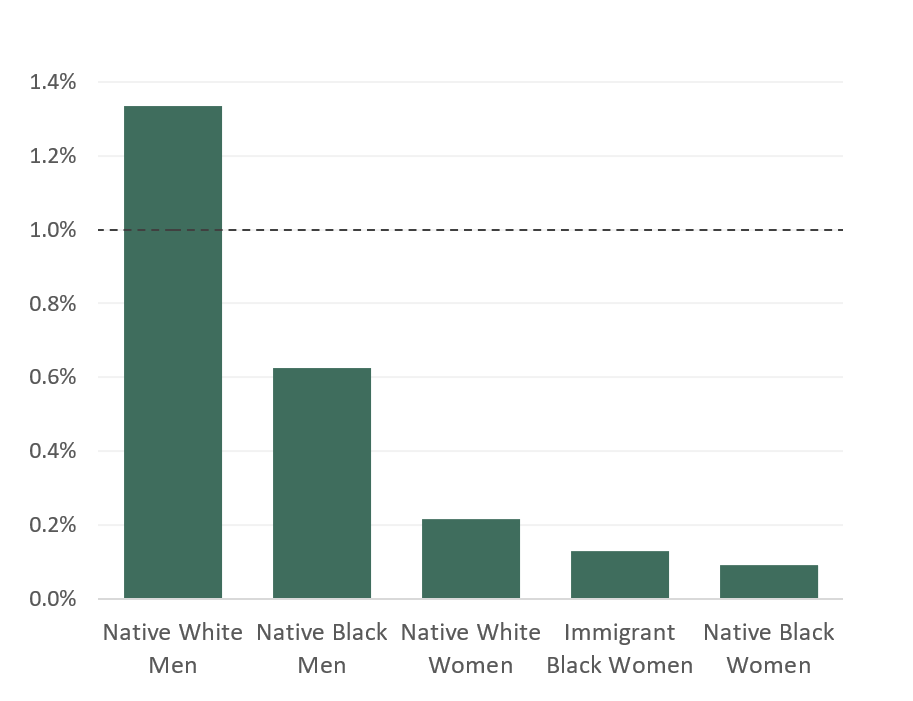
Of course, there are other considerations beyond labour market attachment. Perhaps Black women work in occupations that lack progression opportunities. Perhaps Black women have more childcare responsibilities than other women. Perhaps Black women work less hours or have lower levels of education compared to other groups. To consider this more fully, we ran a set of regressions that compared the likelihood of UK-born Black women being a top earner as compared to a variety of other groups. Essentially, each regression has a sample containing UK-born Black women and one other group denoted by the column heading in Table 2. For instance, the column “UK-born White women” compares UK-born Black female workers to UK-born White female workers. The key variable of interest in these regressions is a dummy variable that is equal to 1 if a worker is UK-born, Black and female, which are reported in Table 2. In our regressions, we control for age, education, marital status, hours, and occupation. We note that the controls do attenuate the effects found, but Table 2 clearly highlights negative and significant differences across all comparisons with the exception of Black women who are not from the UK.
Perhaps this should not surprise us. Elsewhere research suggests that Black women specifically face discrimination due to both their race and their gender. Black women are also visibly under-represented across all areas of work: from doctors and consultants in the NHS to academia, where the first Black female history professor was appointed only in 2018.
Table 2. Comparisons of outcomes of black women compared to various other groups, including controls (click to see larger)
An industry-level analysis
A key question is whether certain industries are better or worse than others in terms of the gender-race gap. It is clear White women who work in the UK are way behind men of all races. To the extent that we may worry that gains to women in the labour market have been disproportionally experienced by White women, it is worthwhile to compare the outcomes of high skilled Black and White women across industry. This comparison speaks to findings that while national policies and economic factors shape workforce outcomes, sectoral cultures and practices play a significant role on how women progress through the workplace. High-skilled jobs require a graduate-level education and are associated with better wages, allowing us to gain an understanding of the gap at management and leadership levels. Table 3 documents these comparison estimates. Overall, the biggest differences between Black and White women are in banking, finance and insurance. For this industry, there are substantive differences regardless of the top earner cut off we consider. That is, differences persist up to the top 33% of earners, where Black women are still earning less than White women. These results mirror findings published by the Bank of England that ethnicity pay gaps are largest amongst the highest-paid. Notably, there are similar differences in the likelihood of being in the top percentile of earners for transport and communications that are just as substantive as banking, finance, and insurance (see Table 3 and Figure 2).
Table 3. Comparisons of outcomes for Black women as compared to White women by industry (high-skilled non-manual occupations only) (click to see larger)
Figure 2. Coefficients for Black women by industry in top percentile equations
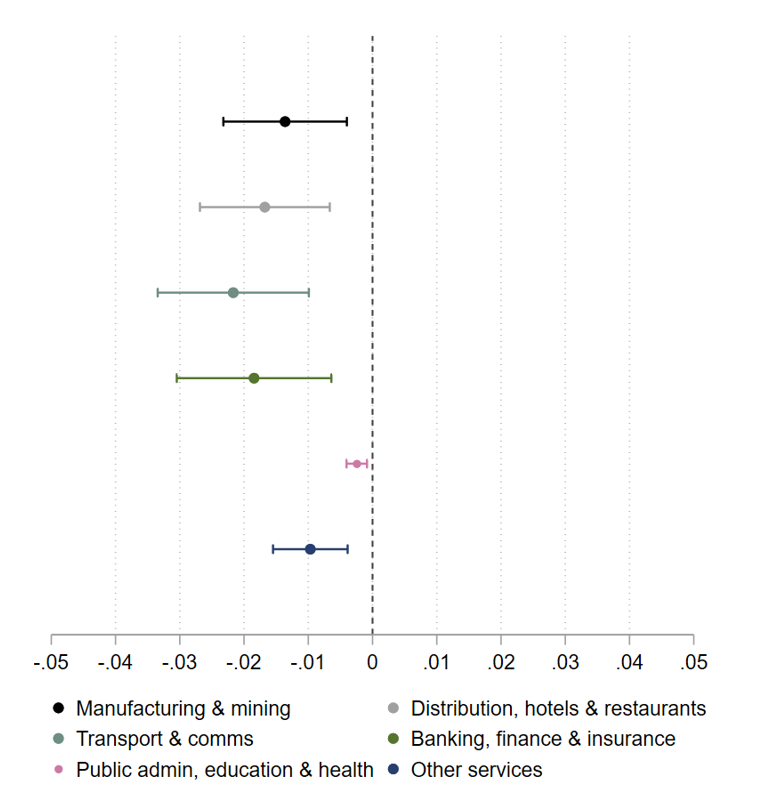
Career stages
We also examined how Black women compared to White women at different stages of their careers. Specifically, we ran analysis specific to women under 30, who are typically starting their careers; women aged 30 to 45-years old, who are mid-career and women over the age of 45, who are the most likely to be in senior positions. Table 4 documents these estimates, highlighting that differences change in magnitude over the course of Black professional women’s careers. At early career stages, Black and White women are equally likely to be in the top 1% income bracket. However, there are notable gaps when we consider the likelihood of being in the top decile, quintile and tertile that remain even after controlling for a number of confounders. 10 to 15 years later, in mid-career stages, gaps in earnings widen and the likelihood of a Black woman being a top earner is far lower than a White woman regardless of how we define ‘top earners’. For example, Black women are 6.1 percentage points less likely than White women to be in the top 10% of income. It would seem that income penalties increase at the ages where income is increasing fastest, similar to the pattern found for the overall gender wage gap. However, while the prevailing explanation for the gender wage gap is career interruptions because of children, because we are comparing within groups of women, this explanation does not carry much weight.
At later stages of working life (women over 45), we note that the gap in the likelihood of being a top earner between these two groups of women gets smaller and is not significant after we control for a variety of factors. This could imply that penalties level out after time. Alternatively, the shrinking gap is owed to Black women opting out of the labour force at this stage, as they grow tired of banging their heads against glass ceilings and brick walls. If this is the case, it implies that we are losing talented Black women from the UK labour market.
Table 4. Coefficients for Black women for separate regressions with White women by age (click to see larger)
Final thoughts
Our research reveals that Black women experience significantly poorer labour market outcomes in terms of earned incomes than any other racial and gender group in society. Even after accounting for a variety of factors that can impact labour force outcomes, there are prevailing earnings gaps for Black women. While we have seen an increase in women on boards in recent years, now 36.2% on FTSE100 boards according to the Hampton-Alexander Review published this month, the representation of black and minority ethnic people is low (less than 10%). According to the DiversityQ FTSE 100 Board Report 2020[1]– none of the executive roles are held by women. Further, our work raises the importance of disaggregating black and minority ethnic workers as far as data will allow. It is noteworthy that Black women have worse outcomes as compared to other minority ethnic workers. This echoes findings in other areas. For example, a recent report written by Erika Brodnock exploring Diversity Beyond Gender in access to Venture Capital found that 81.4% of the total invested between 2009 and 2019 had been invested in companies led by White Men. White female-led companies received 9.2% of the investment over the same time period, while Black female-led companies received just 0.02% of the total amount invested.
We need to know more about what holds Black women back in earnings in the UK, particularly in high-skilled roles in banking, finance, and insurance, where the gaps are the largest. Specifically, we need to identify the obstacles that Black women face to progression, and the mechanisms through which they can be removed. From a societal perspective, taking action could benefit millions of talented, overlooked Black women in the UK. At the same time, the predicted economic gains are substantial. Full representation of Black minority ethnic individuals in the labour market is estimated by the McGregor-Smith review to be 1.3% of GDP. As we face the significant challenge of developing the UK economy in the wake of the COVID-19 pandemic and a world rapidly disrupted by technology, success depends on fostering and utilising all of our talent. We should focus on leveraging the talent of all women in the UK as they are, without a doubt, grossly under-represented. We should focus specifically on Black women as the group that is right now most left behind for reasons that have nothing to do with their ability.
♣♣♣
Notes:
- This blog post is based on a new report by The Inclusion Initiative at LSE’s Department of Psychological and Behavioural Science.
- The post expresses the views of its author(s), not the position of LSE Business Review or the London School of Economics.
- Featured image by Rochelle Nicole on Unsplash
- When you leave a comment, you’re agreeing to our Comment Policy


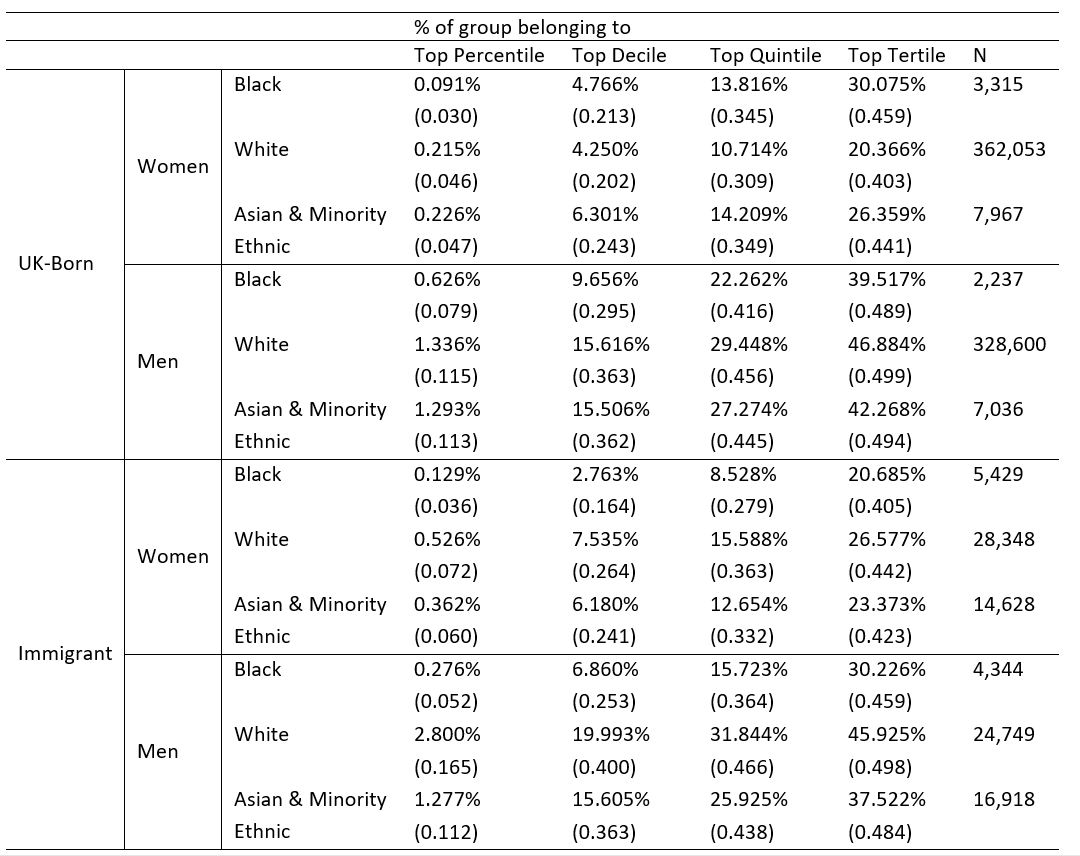
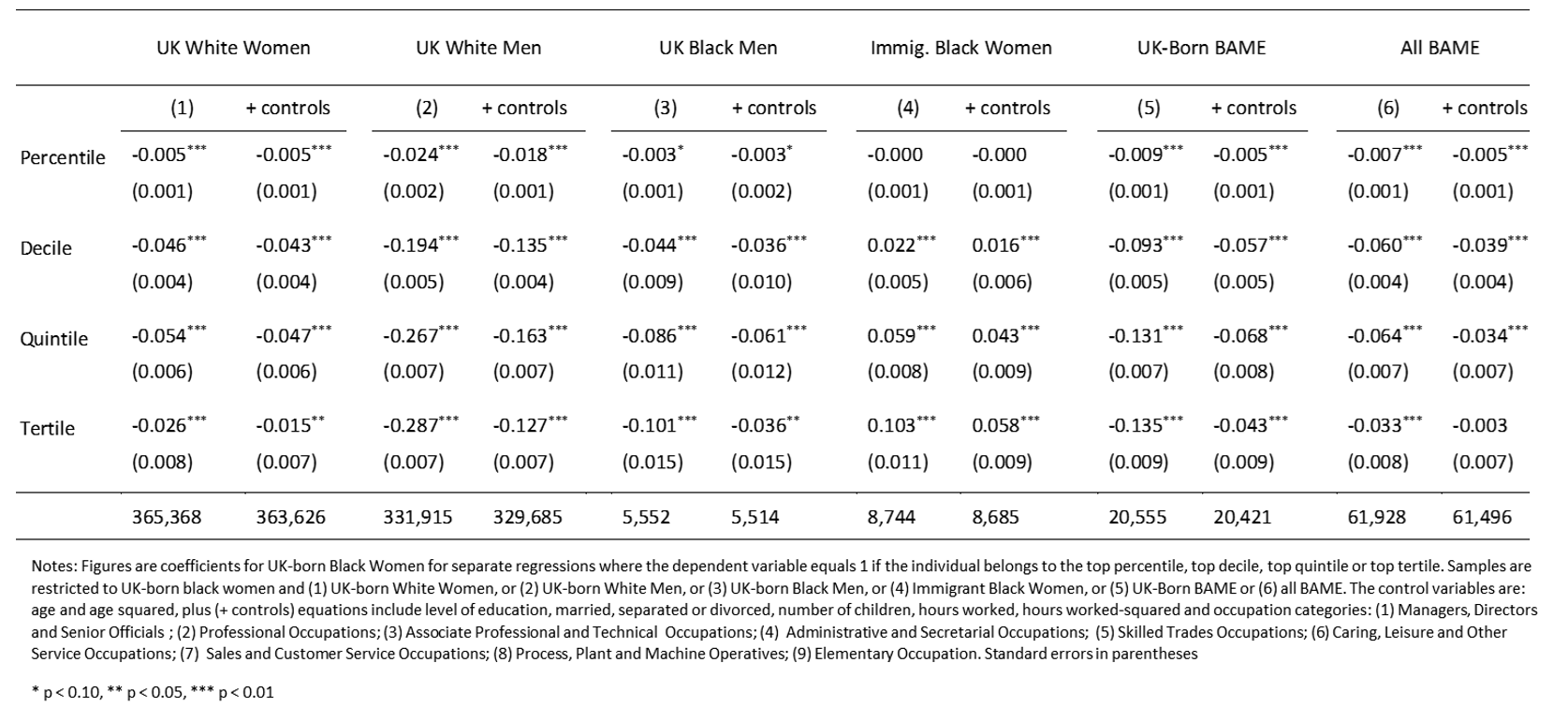

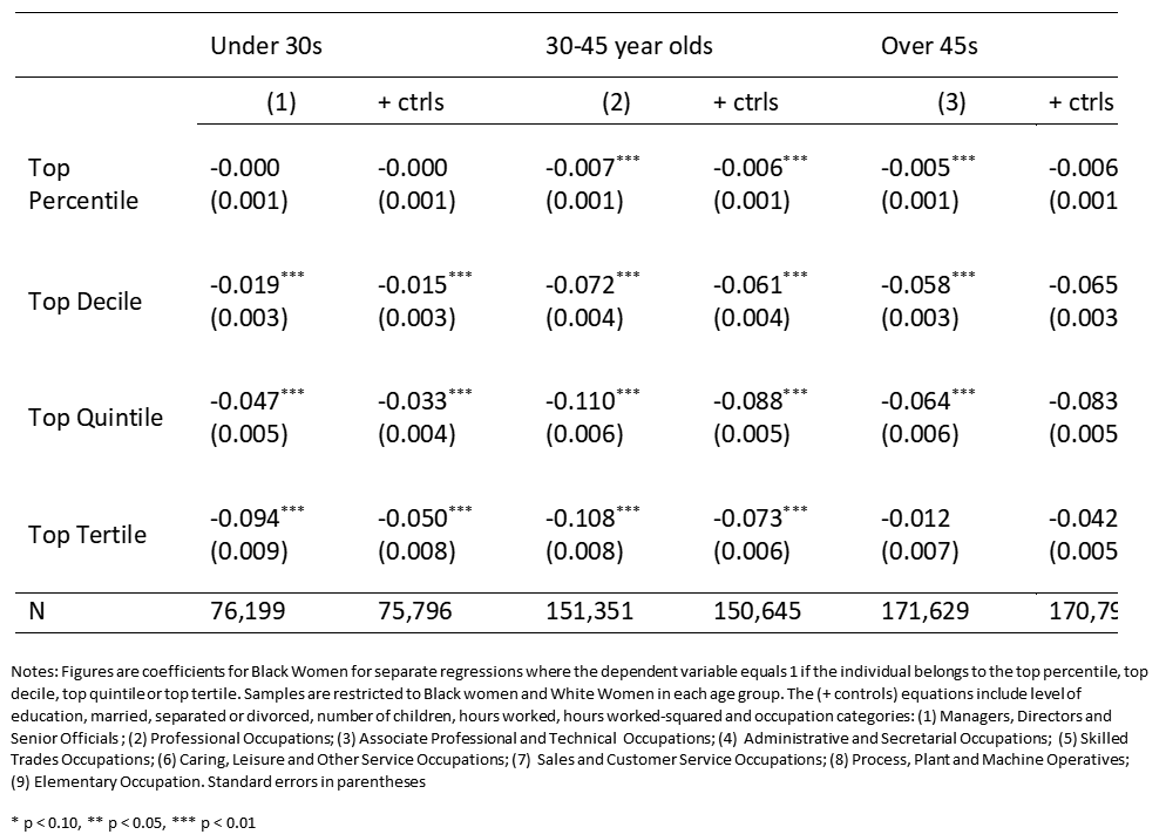




Thank you very much for this report.
I thought I was doing everything wrong since I arrived in the UK 14 years ago.
I have been working so hard for such a long time whilst investing so much on a personal level without any substantial support or return that I cannot go on any further. Indeed, I feel stuck!
This has taken a toll on my confidence and mental health as well as my ability to stay positive generally.
I hold a BA in business and French as well as a Masters in innovative enterprise in the media industry which is already far beyond what many white men or women have and it is still not enough for me to be offered a simple position such as a teacher training place.
Also, you have to remember that whilst studying I raised my only child alone, worked and/or volunteered hence I am experienced and capable!
This is still not working for me as I cannot pass through the cracks of racism, discrimination, harassment, abuse and plainly belittling attitude from the work place at large.
I am exhausted and I have nothing left to give to the UK !
Finally, I forgot to add that I am French and I can speak 4 languages that includes Spanish.
The real questions are :
What is wrong with the UK work system which includes mentality regarding Black females?
And Why so much hatred and racism?!
Thank you for reading and your fabulous work on the subject.
Never mind the 1%. How are they doing compared to the middle and bottom of the pack?
The demographic reasons why the ultra-productive 1% is mainly men is based on firm data on traits of the ultra successful. Highly disagreeable and near impossible to attain work ethic. They are not in the average woman’s wheelhouse I’m afraid. Hence the disparity.
I suspect they (young black women) are keeping pace with young white women in college and university in the West in 2022 and are now outpacing young white men in lower socioeconomic-classes in terms of social mobility and earning power. But these are not the type of data you wish to bring into the light is it?
The drive to gain an ‘equity’ foothold into the hyper-elite top .01% is FAR more lucrative I suspect for the shoot-for-the-stars 4th wave feminist……
I agree, Jason. I have been working in education for almost 25 years, including as a School Principal. I know of many successful black women employed in education, social services, local government and medicine/NHS. This is where they are likely to be found and where they do excel. I’d like to see research on this.
The top 1% has never been within our grasp, for obvious reasons.
A much broader research is needed to reflect the successes and progress of black women, both UK born and immigrants.